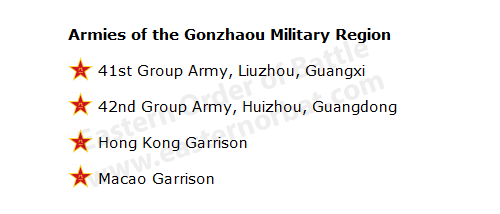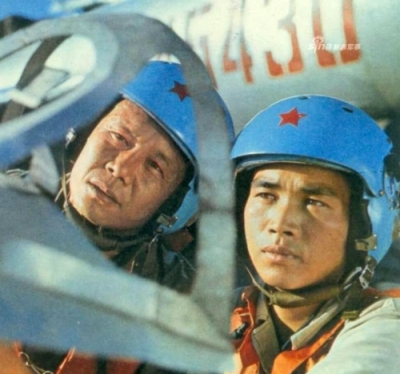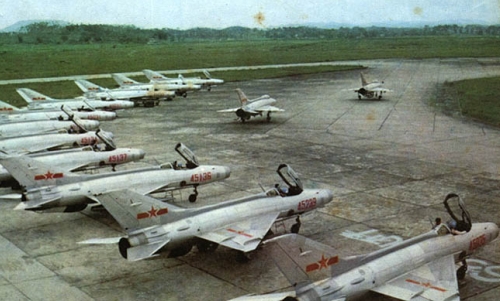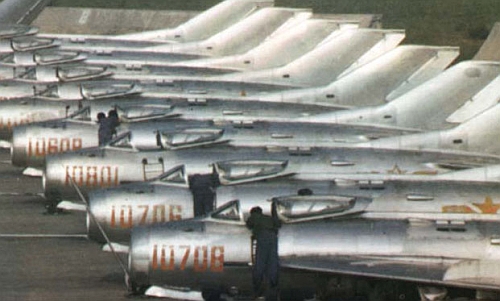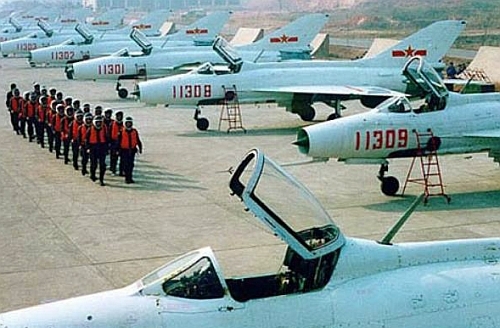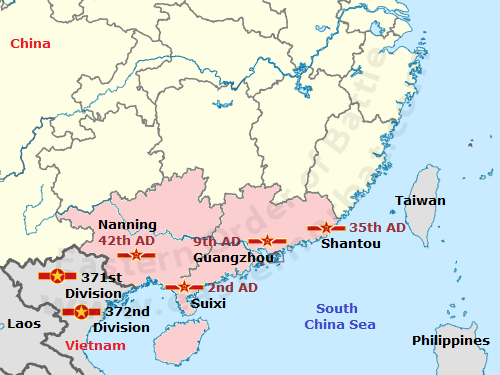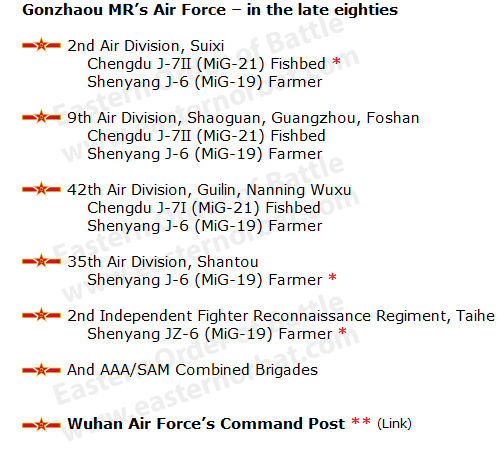|
|
||||||||||||||||||||||
 |
||||||||||||||||||||||
 |
|
Chinese Guangzhou Military Region |
|
|
|||||||||||||||||||||
|
Chinese Guangzhou Military Region |
|
In May 1957, the Guangzhou Military Region’s Air Force and Guangzhou MR Air Defense Force were merged into a combined air defense system. In the late sixties and early seventies, the air units of the Guangzhou Military Region often met the USAF and US Navy bombers at the Sino-Vietnamese border and at the over Gulf of Tonkin. As well as with the Royal Air Force's Camberra reconnaissance aircraft and Hawker Hunter and English Electric Lightning fighters near to Hong Kong.
The Chinese air units used Soviet and Chinese made Shenyang J-5/MiG-17 ‘Fresco’, Shenyang J-6 (MiG-19) ‘Farmer’, Shenyang J-7/MiG-21F-13 ‘Fishbed-C’ fighters along the Sino-Vietnamese border and over the Gulf of Tonkin at this time. Later the China–United States relations normalized in the early seventies, the border violations and the US reconnaissance flights over China have ceased. |
|
|
||||||||||||||||
|
In 1979 the Chinese Air Force deployed about 7-8 Air Divisions to the Vietnamese border area. During the Sino-Vietnamese War neither the People's Liberation Army Air Force nor the Vietnamese Air Force flew any combat missions in direct support of their ground troops; nor did the Chinese air defense forces intercepted any Vietnamese aircraft along the border. |
|
|
||||||||||||||||||||||||||||||||
|
|
 |
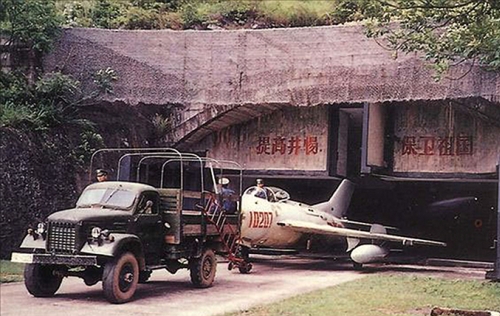 |
||||
|
The Chinese Air Force started constructing underground hangars as part of its large scale 1950s airfield construction effort. In the Guangzhou Military Region, the PLAAF build seven underground air bases. The 9th Air Division's Shaoguan airbase was constructed to house fighter aircraft and is equipped with two 12 meter hangar entrances, which yield an estimated tunnel length of ~750 meters. The two photos were taken about the 9th Air Division / 25th Air Regiment crew and their J-6 (MiG-19) fighter aircraft in the underground hangar and in front of hangar door. |
|||||
|
|
|
|
|
|
|
|
After the Sino-Vietnamese war, the Soviet Union fortified the Vietnamese People's Air Force. In the early eighties, the Vietnamese 371st and 372nd Divisions used nearly 160(!) Soviet-made MiG-21bis ‘Fishbed-N’ tactical fighter types with very modern air to air weapons at five fighter air regiments. The Soviet Union deployed one squadron advanced MiG-23MLD ‘Flogger-K’ fighters as well to Vietnam in the middle of the eighties. |
|
|
||||||||||||||||||||||||||||||||
|
When the Wuhan Military Region Air Force was disbanded in September 1985, the Wuhan MR Air Force's units (13th transport; 18th and the 27th fighter; 48th bomber air divisions; and the 15th Airborne Corps) were transferred to the Guangzhou Military Region Air Force. |
|
|
||||||||||||||||||||
|
|

